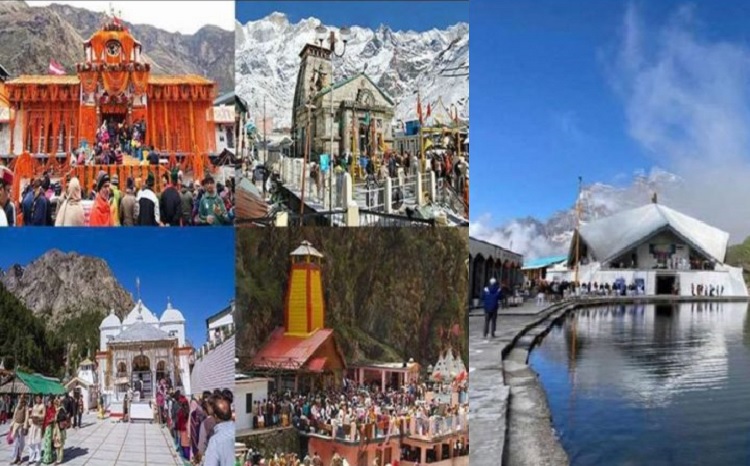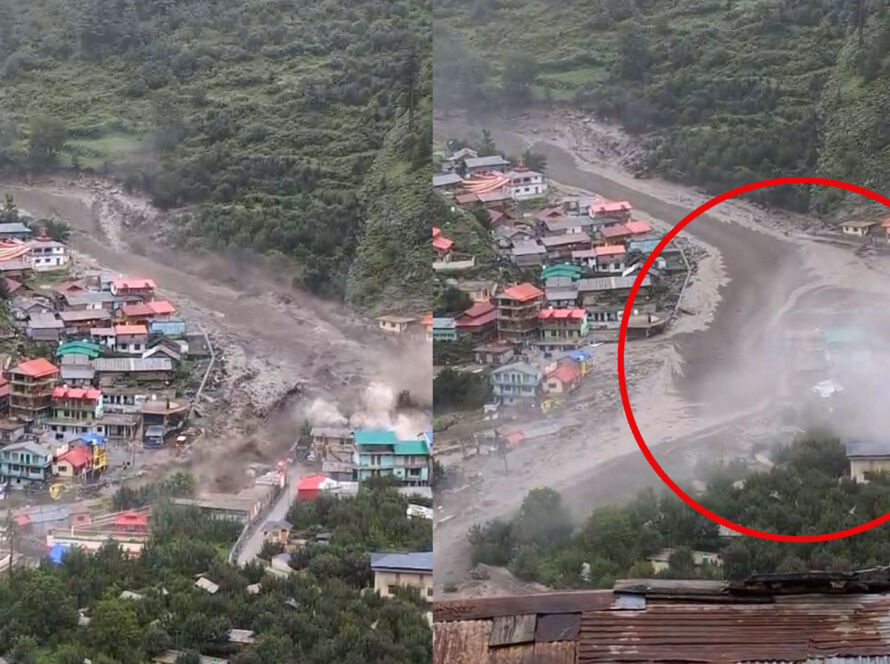Have you heard? Over 22 lakh pilgrims have already registered for the Char Dham Yatra 2025, marking it as one of Uttarakhand’s most anticipated spiritual seasons. For devotees seeking tranquility atop the Himalayas, this sacred journey—spanning Yamunotri, Gangotri, Kedarnath, and Badrinath—blends divine devotion with awe-inspiring natural beauty.
In this guide, you’ll discover the rich roots of the pilgrimage, practical travel advice, environmental considerations, and critical updates—including recent flood-related disruptions and aviation safety alerts. Whether you’re planning your first yatra or returning for renewal, this article equips you with everything you need for a smooth, meaningful experience.
Historical & Cultural Context
The Char Dham Yatra, carved out by the revered Adi Shankaracharya in the 8th century, has long been the spiritual backbone of Uttarakhand. It links four sacred high-altitude shrines—Yamunotri, the origin of the Yamuna River; Gangotri, where the Ganges flows; Kedarnath, the seat of Lord Shiva; and Badrinath, abode of Lord Vishnu.
Each dham bears a legend: pilgrims warm themselves in Yamunotri’s natural springs before prayer; Gangotri’s iconic Bhagirathi source lies amid glacial majesty; Kedarnath stands solemn against perilous terrain; and Badrinath sits amidst Nar-Narayan peaks, offering solace and strength.
Over centuries, this arduous trek evolved with improved roads, registration systems, and infrastructure, yet continues to preserve its soul—uniting faith, Himalayan grandeur, and cultural humility.
Geographical Significance & Access
The Char Dham circuit unfolds across Uttarakhand’s Garhwal Himalayas. Yamunotri and Gangotri are accessible from Rishikesh via dense valleys and forest roads. Kedarnath demands a short trek or pony ride from Gaurikund, while Badrinath lies atop the Garhwal plateau.
Pilgrims traverse rugged riverscapes, alpine meadows, and mist-veiled passes. Accessibility ranges from self-drive and tourist buses to helicopters—though recent incidents have spotlighted air safety concerns.
Highlights & Seasonal Attractions
1. Yamunotri – The Sacred Source of the Yamuna (3,293 m)
Nestled at the origin of the Yamuna River, Yamunotri Temple is perched high in the Garhwal Himalayas and dedicated to Goddess Yamuna. Built in the 19th century by Maharaja Pratap Shah, this sacred site is not just a symbol of spiritual purity—it’s surrounded by spiritual charm: bubbling thermal springs like Suryakund where pilgrims dip potatoes and rice in hot water as regional offerings.
Seasonal Highlight: In July–August, the rare Brahma Kamal blooms near the temple—a once-a-year spectacle believed to carry divine power.
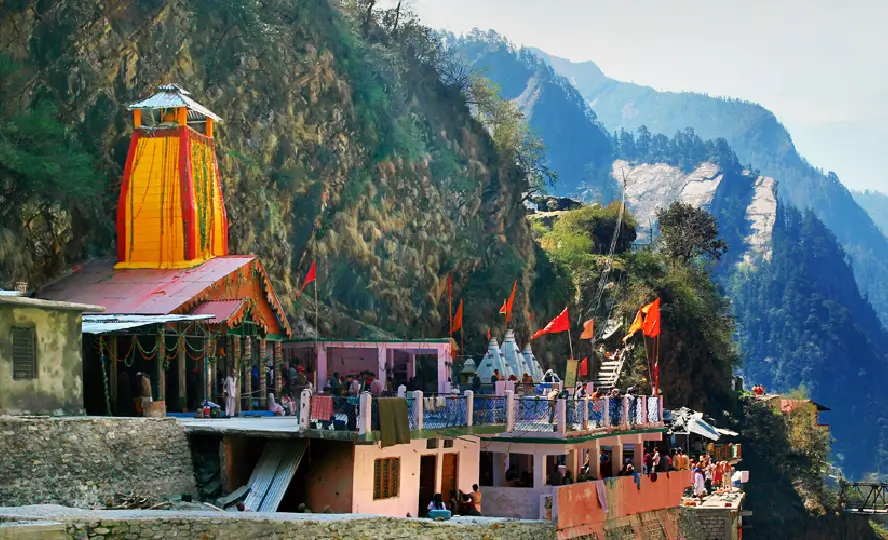
2. Gangotri – The Origin of the Ganges (3,042 m)
Set amidst a dramatic Himalayan landscape, the temple of Gangotri marks the spiritual birthplace of the Ganges, emerging from the Bhagirathi glacier. Pilgrims revere this spot for its ability to cleanse sins—many perform ritual dips in the icy Bhagirathi water and offer prayers at the sempiternal temple. The site echoes with myths—such as King Bhagiratha’s penance and the Pandavas performing ancestral Yajnas here.

3. Kedarnath – The Jyotirlinga of Shiva (3,583 m)
Kedarnath Temple, one of the twelve Jyotirlingas, is dedicated to Lord Shiva and lies high amidst the snowy Himalayas near the Mandakini River. It stands as the supreme embodiment of divine consciousness, known as ‘Kedaranatha’. Local legend connects the temple’s origin to the Pandavas seeking redemption and Shiva’s elusive blessings.
Experience: Though challenging, the pilgrimage rewards trekkers with breathtaking mountain views, rich devotion, and a touchstone of spiritual fellowship.

4. Badrinath – The Abode of Vishnu (3,100 m)
Nestled alongside the Alaknanda River, Badrinath Temple honors Lord Vishnu in his form as Badrinarayan. It’s revered by Vaishnavas and holds a place among the 108 Divya Desams. The temple sees an incredible footfall—nearly 28 lakh visits in just two months in 2022, underlining its significance.
Surrounded by the sacred Nar-Narayan peaks, Badrinath offers both spiritual solace and natural splendor, especially during its summer opening from April to November.
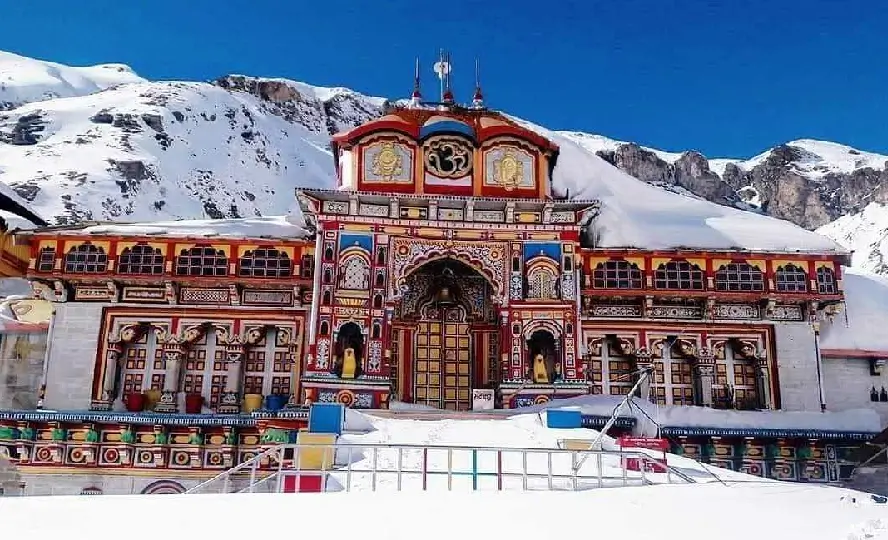
5. Hemkund Sahib – A Glacial Sikh Pilgrimage (4,572 m)
Though not part of the classic four, Hemkund Sahib is a mystical glacial lake site deeply revered in Sikhism. Set at 15,200 feet, the gurudwara honors Sikh Guru Gobind Singh and is enveloped by seven mountain peaks draped in snow. On its opening day in May 2025, over 4,440 pilgrims walked this sacred path.
Note: The trek to Hemkund through the Valley of Flowers offers a soul-stirring union of faith and natural color, with alpine blooms peaking from July through September.
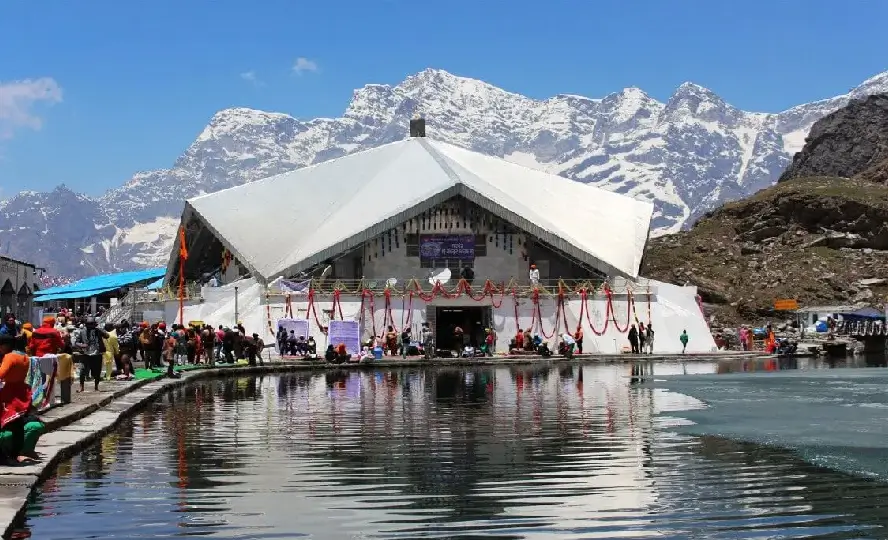
Seasonal Insight
- Summer (April–June): Best for temple access, clear mountain views, and smooth travel routes.
- Monsoon (July–September): Dramatic landscapes but increased risks—trust updates and ground conditions.
- Autumn (September–October): Crisp, calm air and stunning visibility—an ideal climactic window before winter closure.
Mind-Blowing Facts
- 22 lakh+ registered pilgrims for 2025’s yatra—an all-time high. The Economic Times
- Aadhaar e-KYC designations reduce delays and enhance safety. Moneycontrol
- 811 landslides recorded on the Char Dham Highway—a sobering environmental indicator.
- Helicopter crash near Kedarnath killed seven; all services later suspended. AP News
- Flash floods in Dharali village buried entire structures under debris powerful enough to swallow a three-story building.
Latest News & Developments
- Record registrations: Over 22 lakh pilgrims signed up for Char Dham 2025 as of late April. The Economic Times
- Air safety overhaul: Following a fatal helicopter crash in June, authorities suspended all services temporarily and ordered stricter SOPs and safety oversight. Reuters / Wikipedia
- Flood disaster impacts: A flash flood near Dharali devastated parts of the route, causing disruptions at Gangotri Dham, isolating 300 shops, and resulting in estimated ₹50 crore losses. Over 1,200 pilgrims were evacuated, and relief is ongoing. The Times of India
- Rescue challenges: Landslides and flooded roads continue to hamper efforts, with helicopters and rescue teams using heavy machinery and drones for access.
Practical Travel Tips
- When to Travel: Optimal window is April to June and September to October—avoid monsoon rush and minimize landslide risk.
- Registration: Mandatory Aadhaar-based e-KYC ensures smooth entry to dham temples. Moneycontrol
- Alternative to Choppers: Given aviation risks, consider road-to-Gaurikund and trekking to Kedarnath instead.
- Local Transport: Buses, tourist taxis, and shared jeeps operate on the highway routes—including newly developed Char Dham Mahamarg.
- Health & Safety: Practice gradual altitude acclimatization; keep water, warm clothes; check weather alerts often.
- Support Locals: Use dedicated rest halts, buy from village shops, and respect community services like langars.
Personal Anecdote
In May, I completed the Char Dham Yatra amidst clear skies. At Yamunotri, I felt released in the misty warmth of the springs; Gangotri’s glacier melted into my awe-struck gaze; Kedarnath greeted me in silent grandeur; Badrinath’s calm valley put life into a frame of devotion. Local hosts served halva and chai, sharing their stories of faith and resilience. Despite later floods affecting the route, the experience remains my most spiritual and grounding memory—an expedition I’ll cherish forever.
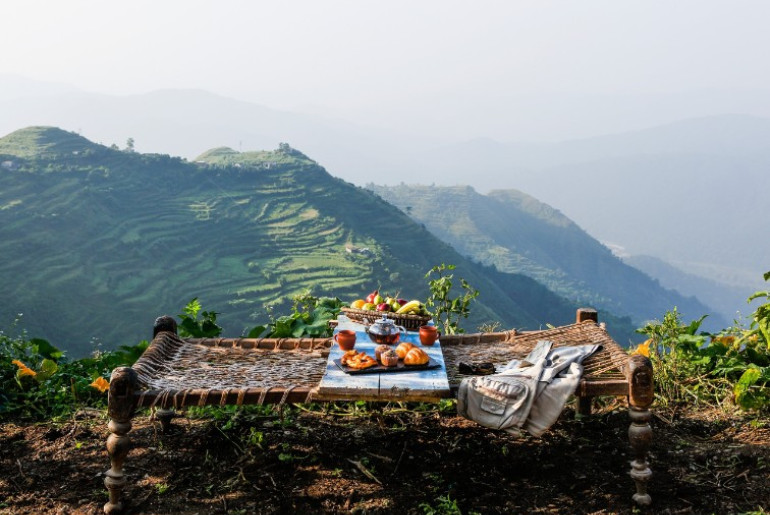
Environmental & Sustainable Practices
- Eco-Friendly Lodges: New rest halts are designed with minimal land disturbance in mind, preserving terrain integrity.
- Zero Waste Push: Pilgrims are required to carry reusable bottles; waste bins are placed in dham areas.
- Aviation Checks: After June’s helicopter tragedy, only approved twin-engine choppers fly, reducing risk and carbon impact.
- Highway Oversight: Environmental studies and slope stabilization are prioritized amid road widening to prevent landslides.
- Community-Focused Tourism: Staying in homestays and purchasing local handicrafts ensures economic reinvestment and cultural preservation.
FAQs
- Q: Is registration required?
A: Yes, Aadhaar e-KYC registration is mandatory for all pilgrims. - Q: Is helicopter transport safe now?
A: Recent crashes have prompted stricter SOPs—many choose road-trek alternatives instead. - Q: Is the route affected by floods?
A: The flash flood near Dharali damaged routes near Gangotri, with restoration in progress. - Q: Best seasons to visit?
A: May-June and Sep-Oct—snowy view, safer roads, fewer landslides. - Q: How to be sustainable?
A: Use reusable gear, stay in eco-lodges, and support local economies.
Takeaway
The Char Dham Yatra 2025 is a once-in-a-lifetime pilgrimage—where spirituality, Himalayan grandeur, and timeless traditions converge. Amid record pilgrim turnout, the experience remains accessible thanks to safety enhancements and sustainable practices. Whether journeying on foot, by road, or by chopper, prepare well, register early, and tread with humility.
Feel a call to the mountains? Start planning today, share your journey with us, and follow tehrigarhwal.com for heartfelt stories, real-time updates, and on-ground advice from Uttarakhand’s sacred trails.

